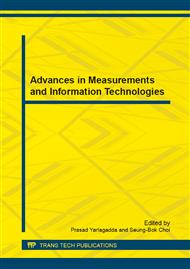p.981
p.985
p.990
p.999
p.1003
p.1007
p.1011
p.1015
p.1022
Optimal Control of Energy Storage Based on Fuzzy Dependent-Chance Programming
Abstract:
In order to maximize the match between the output of the Hybrid Wind/Photovoltaic/ Energy storage System and the scheduling curve,the article takes the measure that optimizes and controls the energy storage device one day ahead.Due to the fuzziness of the wind and photovoltaic output, the optimal control method of energy storage is proposed based on a fuzzy dependent-chance programming theory. This method considers the constraints of the energy storage device including the power output and energy constrain, and the matching degree of each time is represented by credibility value.So the final goal is maximizing the mean value of the total credibility within a day of 96 periods.The genetic algorithm based fuzzy simulation is used to solve the model,then we can get the different periods of energy storage charge and discharge power corresponding to the credibility of maximum mean value.
Info:
Periodical:
Pages:
1003-1006
Citation:
Online since:
February 2014
Authors:
Price:
Сopyright:
© 2014 Trans Tech Publications Ltd. All Rights Reserved
Share:
Citation:


